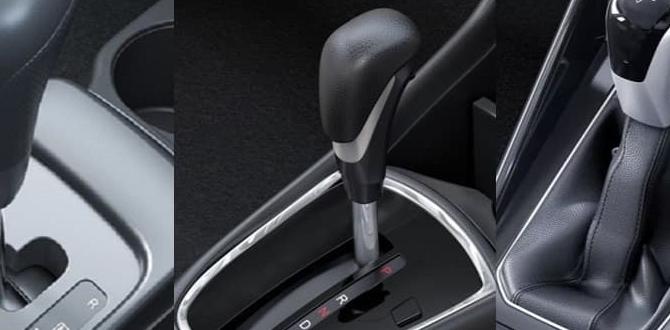Carbide end mills are precision cutting tools essential for creating accurate slots, pockets, and profiles in various materials, offering superior hardness and heat resistance for demanding machining tasks.
Welcome to Lathe Hub, where we’re all about making precise machining accessible and understandable! If you’re diving into the world of metalworking or even advanced woodworking, you’ve likely encountered terms like “end mill” thrown around. Today, we’re going to focus on a particularly fantastic type: the carbide end mill. They might seem a little specialized, but trust me, once you understand what they are and how to use them, they become indispensable for achieving those really clean, accurate cuts. We’ll break down exactly what makes them special, how to pick the right one for your project, and how to get the best results without any fuss. Stick around, and let’s demystify these powerful little tools!
What Exactly is a Carbide End Mill?
Before we get into the nitty-gritty of using them, let’s clarify what an end mill is. Think of it as a rotating cutting tool that looks a bit like a drill bit, but with an important difference: its cutting edges extend all the way up its sides. This means it can cut not just downwards, but also sideways. This ability makes end mills incredibly versatile for tasks like cutting slots, facing off surfaces, creating intricate shapes, and even plunging straight into material like a drill.
Now, why “carbide”? This refers to the material the cutting edges of the end mill are made from – cemented carbide. This is a composite material made by pressing and then sintering (heating to a high temperature) a mixture of fine tungsten carbide powder and a binder metal, usually cobalt. The result is an extremely hard and wear-resistant material, far superior to high-speed steel (HSS) which is common for many other cutting tools.
The Power of Carbide
Carbide’s hardness is its superpower. It allows carbide end mills to:
Cut harder materials: They can tackle materials that would quickly dull or even chip HSS end mills, like hardened steels, stainless steels, and exotic alloys.
Machine at higher speeds: Because they resist heat better, you can often run carbide end mills at faster spindle speeds and feed rates, which means faster machining times.
Last longer: When used correctly, carbide end mills have a significantly longer tool life compared to HSS.
Maintain sharp edges: Their inherent hardness means they hold their cutting edge for more passes and for longer periods.
This makes them an essential investment for anyone serious about achieving precision and efficiency in their machining projects. For those looking for specific applications, you might encounter variations like a “carbide end mill 1/8 inch 3/8 shank long reach for tool steel D2 tight tolerance.” This tells you a lot: it’s a small diameter (1/8 inch) with a standard shank size (3/8 inch), designed for long reaches to get into deep areas, and specifically intended for very hard materials like D2 tool steel where maintaining tight tolerances is crucial.
Carbide vs. HSS End Mills: When to Choose Which
It’s good to know when to reach for carbide and when a High-Speed Steel (HSS) end mill might be sufficient or even preferable.
High-Speed Steel (HSS) End Mills
Pros: Generally less expensive, more forgiving of less-than-ideal conditions (like poor fixturing or inconsistent coolant), slightly more flexible which can prevent chipping in some situations, good for softer materials.
Cons: Significantly lower hardness, wears out faster, cannot handle high-temperature machining, dulls quickly in hard materials.
Carbide End Mills
Pros: Extremely hard and wear-resistant, can machine harder materials, can run at higher speeds and feeds leading to faster production, longer tool life when used properly, excellent for precise, repeatable cuts.
Cons: More expensive upfront, more brittle (can chip if subjected to shock or vibration), require more rigid setups and often better coolant delivery.
For tight tolerance work, especially in tougher materials like D2 tool steel, carbide is almost always the superior choice. The consistency and wear resistance are key to maintaining that precision over multiple parts.
Anatomy of a Carbide End Mill
Understanding the different parts of an end mill helps in choosing the right one and using it effectively. Here are the key features:
Cutting End: This is where the magic happens. The shape of the end determines what kind of cut can be made.
Flat End: The most common type, used for creating slots, pockets, and shoulders.
Ball Nose End: Has a hemispherical tip, ideal for creating rounded profiles and 3D contours.
Corner Radius End: Similar to a flat end, but with a small radius at the corners to strengthen the cutting edge and prevent sharp notches when cutting corners.
Flutes: These are the helical grooves that run along the body of the end mill. They clear chips away from the cutting area and form the cutting edges. The number of flutes is important:
2 Flutes: Excellent for slotting and plunging, as they provide good chip clearance. Often preferred for softer materials like aluminum.
3-4 Flutes: Good all-arounders, offering a balance of cutting and chip evacuation. Suitable for a wider range of materials.
More than 4 Flutes: Designed for aggressive material removal (high-feed milling) and finishing passes, as they leave a smoother surface but have less chip clearance. Generally used in less demanding materials or specific applications.
Shank: The part of the end mill that is held by your milling machine’s collet or tool holder.
Straight Shank: The most common type.
Weldon Shank: Features a flat ground into the shank, which is gripped by a set screw in the tool holder for extra security, preventing rotation. This is crucial for high-torque applications.
Taper Shank: Used in specific machines that accept taper tooling.
Diameter: The overall width of the end mill’s cutting portion. This is what you’ll select based on the width of the slot or pocket you need to create. Common sizes range from very small (e.g., 1/16 inch) to larger diameters.
Length: The overall length of the end mill and, importantly, the length of the fluted cutting section.
Standard Length: For general-purpose machining.
Long Reach / Extended Length: As seen in our example (“long reach”), these have a longer unsupported length of the shank to get deeper into a part without the machine head colliding. This requires slower, more careful machining due to potential for vibration.
Choosing the Right Carbide End Mill for Your Project
Selecting the correct end mill is crucial for good results, tool longevity, and safety. Here’s a breakdown of what to consider:
1. Material Being Machined
This is arguably the most critical factor. As we discussed, carbide excels in harder materials.
Tool Steels (like D2): These are very hard, often requiring specific carbide end mills designed for them. A “carbide end mill for tool steel” is what you’d look for. These often have coatings to further enhance performance and reduce heat.
Stainless Steels: Another tough material that benefits greatly from carbide. Speeds and feeds will need careful adjustment.
Aluminum & Mild Steels: While carbide can be used, you might not always need it. For softer aluminum, a high-performance HSS or a specialized aluminum end mill (often with fewer flutes and highly polished flutes for chip evacuation) can be very effective. For mild steels, both HSS and carbide work well, but carbide will last longer and allow for faster machining if your machine is rigid enough.
Plastics & Composites: Specialized end mills exist for these, but a sharp, carbide end mill with a high polish and potentially a specific geometry can also work well. Check manufacturer recommendations.
2. Type of Operation
What are you trying to achieve?
Slotting: Creating a groove. For full-width slots, a 2-flute end mill offers the best chip clearance.
Pocketing: Machining out an area. A 4-flute is often a good choice, allowing for efficient material removal. For deep pockets, you might need a long-reach end mill.
Profiling / Contouring: Cutting around an outline. A 2 or 4-flute can work, depending on material and desired finish. For complex 3D surfaces, a ball nose end mill is required.
Facing: Flattening a surface. A standard flat end mill can do this, but dedicated face mills are often more efficient for large surfaces.
Plunging: Cutting straight down into material. Only end mills designed for this (often 2-flute) should be used.
3. End Mill Geometry and Features
Beyond the basic type, look at these specifics:
Number of Flutes: As mentioned, 2 for slotting, 4 for general pocketing, more for finishing or high-feed machining.
Coating: These are thin layers applied to the carbide to improve performance. Common coatings include:
TiN (Titanium Nitride): A common, general-purpose coating that improves hardness and lubricity, good for steel and cast iron.
TiAlN (Titanium Aluminum Nitride): Excellent for high-temperature applications and machining of stainless steels and exotic alloys. It forms a protective oxide layer at high heat.
AlTiN (Aluminum Titanium Nitride): Similar to TiAlN, often offering even better performance in high-heat situations.
ZrN (Zirconium Nitride): Good for aluminum and other non-ferrous materials, providing good lubricity and preventing material buildup.
Uncoated: Often preferred for aluminum and plastics as they have natural lubricity. Their performance is heavily reliant on the carbide substrate itself.
Helix Angle: The angle of the flutes. A higher helix angle (e.g., 45°) provides a smoother cutting action and better surface finish but can increase cutting forces. A lower helix angle (e.g., 30°) offers more rigidity and better chip evacuation, suitable for harder materials.
Corner Radius: A small radius at the corners of a flat end mill strengthens the tool and prevents chipping compared to a sharp square corner. This is crucial when “tight tolerance” is a requirement, preventing microscopic chipping that can affect accuracy. Even a 0.005″ or 0.010″ radius provides significant benefit.
Shank Type: A Weldon flat on the shank is essential if your tool holders have a set screw to prevent the end mill from spinning under heavy loads.
4. Size and Reach
Diameter: Must match the required feature size. For a 1/8″ slot, you need a 1/8″ end mill.
Reach: If you need to cut deep into a part, a long-reach end mill is necessary. Be aware that the longer the unsupported length, the more susceptible the tool is to vibration and deflection. This means slower speeds, lower depths of cut, and a strong emphasis on rigidity and coolant.
How to Use a Carbide End Mill Safely and Effectively
Using these tools correctly is just as important as choosing the right one. Safety first, always!
Safety Precautions
Before you even power up the machine:
Eye Protection: Always wear safety glasses or a face shield. Flying chips can cause serious injury.
Secure Workpiece: Ensure your workpiece is firmly clamped. A loose part can become a dangerous projectile.
Secure Tool: Make sure the end mill is properly seated and tightened in the collet or tool holder.
Machine Guarding: Use all available guards on your milling machine.
No Loose Clothing/Jewelry: These can get caught in rotating machinery.
Coolant/Lubrication: Essential for most carbide milling, it cools the tool, lubricates the cut, and flushes chips.
Understand Your Machine: Know its capabilities and limitations. Don’t push it beyond what it’s designed for.
Setting Up the Cut
1. Mount the Workpiece: Securely clamp your material in your milling vise or directly to the machine table using T-nuts and clamps. Ensure it’s indicated so it’s perfectly aligned with your machine’s axes if needed.
2. Install the End Mill: Insert the end mill into the appropriate collet and tighten it securely in the spindle. Ensure the shank is seated fully. For heavy cuts or long reach, using a tool holder with a set screw (Weldon shank) is highly recommended.
3. Set Your Zero Point: Use a tool setter, edge finder, or probe to accurately locate your machine’s zero (X, Y, Z) position relative to your workpiece. This is critical for precision.
4. Determine Cutting Parameters: This is where research or experience comes in. You need to decide on:
Spindle Speed (RPM): This depends on the end mill diameter, material, and the specific carbide grade and coating. A good starting point for a 1/8″ carbide end mill in steel might be around 2000-4000 RPM, but you’ll need to consult charts or manufacturer recommendations. Always start conservatively.
Feed Rate (IPM – Inches Per Minute): How fast the tool advances into the material. This is closely linked to RPM and chip load.
Chip Load: The thickness of the chip being removed by each cutting edge. Each end mill and material combination has an ideal chip load range. Too small, and you’ll rub and generate heat; too large, and you’ll overload the tool or machine.
Depth of Cut (DOC): How deep the end mill cuts into the material per pass. For tough materials or long reach, a shallow DOC (e.g., 0.010″ – 0.020″) is crucial. For slotting, you might take fractional depths of the diameter.
Width of Cut (WOC): How much of the end mill’s diameter is engaged in the material radially when cutting. For slotting, WOC is usually ~100% of the diameter. For profiling or pocketing, it’s often much less.
A helpful resource for starting parameters is the Machinist’s Handbook or manufacturer websites. For example, Sandvik Coromant and Kennametal provide online tools and data sheets.
Making the Cut
1. Engage the Spindle: Start the spindle at your chosen RPM.
2. Apply Coolant: Turn on your coolant system. Flood coolant is ideal for carbide, but a mist coolant or even a good cutting fluid can work for less demanding tasks.
3. Feed into the Material: Carefully feed the end mill into the workpiece at your programmed feed rate. For manual machining, this is done by handwheel. For CNC, it’s programmed.
4. Perform the Operation: Let the end mill do its work, clearing chips as it goes. Monitor the sound of the cut – a harsh chattering often indicates a problem (tooling, rigidity, speed/feed).
5. Retract the Tool: Once the pass is complete, retract the end mill from the material and turn off the spindle.
6. Inspect and Repeat: Check your work for accuracy and surface finish. If further cuts are needed, adjust your depth of cut and repeat the process.
Tips for Precision with Long Reach End Mills
Our example mentioned a “long reach” end mill for “tight tolerance” in “tool steel D2.” This is a challenging combination requiring special attention:
Rigidity is King: Ensure your machine’s spindle bearings are tight, your tool holder is high quality, and your workpiece is clamped extremely well. Any flex will lead to lost precision.
Shallow Depths of Cut: This cannot be stressed enough. A long, thin end mill wants to flex. Taking very light axial depths of cut (e.g., 0.05 to 0.2 times the diameter) minimizes this.
Moderate Radial Width of Cut: Don’t try to hog out material. Keep the radial engagement light. Consider using a ‘trochoidal’ milling strategy (also known as high-feed or constant-radius milling) if your CNC controller supports it, as this keeps the chip load low and consistent, reducing stress on the tool.
Appropriate Speeds and Feeds: Consult manufacturer data. You’ll likely run slower RPMs and potentially lower feed rates than you would with a standard length end mill to account for the increased overhang.
Coolant is Non-Negotiable: Effective coolant delivery is vital to manage heat and flush chips from the deep flute of a long-reach end mill.
Listen and Feel: Pay close attention to the sound and vibration. Any increase in noise or chatter means something is wrong, and you should back off.
Coated for Toughness: For D2 steel, an AlTiN or TiAlN coating is highly recommended, and an end mill specifically designed for hardened steels will have geometry optimized for this.
Common Problems and Solutions When Using Carbide End Mills
Even with the best tools, things can go wrong. Here are common issues and how to fix them:
Tool Chipping or Breaking:
Cause: Too high a feed rate, too deep a cut, insufficient rigidity, material inconsistency, shock loading (plunging too fast into hard material).
Solution: Reduce feed rate, reduce depth of cut, ensure workpiece and tool are securely held, use appropriate coolant, avoid plunging into very hard spots unless the end mill is designed for it.
Poor Surface Finish (Rough, Scalloped):
Cause:* Dull tool, incorrect speed/feed parameters, excessive runout (tool wobbling), insufficient coolant, vibration.





